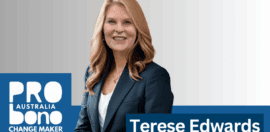Summit Explores Megatrends in New Economy
21 August 2013 at 12:43 pm
Hyperconnectivity will transform traditional economic models and underpin the ‘new economy’, keynote speakers have told a dual-state summit today.
An intimate early morning crowd at the New Economy Summit, co-hosted in Melbourne and Sydney, heard the two keynotes, Dr James Slezak and Mark Pesce, signpost the potential of technology for aggregation of resources and the people who would influence the direction of the New Economy.
Hyperconnectivity refers to the direct peer-to-peer communications enabled by modern technologies such as smartphones and the internet.
“In the digital age collective action is driving social change at unprecedented rates. The question for us is how we can tap into these new opportunities,” Dr Slezak said.
An expert on social movements, consumer activism and the new economy, he said hyperconnectivity could be used in a new economy to form models of collaborative consumption.
People can traditionally interact with the market in three primary ways, Dr Slezak said. As citizens, as consumers and as producers.
Hyperconnectivity could bring consumer, citizen, producer together in one system so they have more direct impact and the ability to influence social change, Dr Slezak said.
Dr Slezak referred to the way hyperconnectivity had transformed the social sector and accelerated momentum behind social causes such as gay marriage.
In the past, Dr Slezak said people were only engaged in the market as citizens, concerned with issues on an ethical and personal level, by political parties and NGOs.
But advocacy organisations such as Getup were using principles of hyperconnectivity to focus on collective action, giving people other ways to get involved, he said.
“There’s more rapid direct response action,” Dr Slezak said.
People are now starting to apply these models to economic issues, he suggested, adding “this is the direction we need to take”.
“The future used to look so good,” Dr Slezak said. “Levels of self-reported happiness and life satisfaction have flatlined.
“Underlying all of this is a set of economic building blocks fundamentally unchanged since the steam age.
“If you had the same rate of innovation in finance as in technology, we would be writing apps for punch card machines.
“We have to find ways to pull other levers of power open to us. We’re citizens but we’re also consumers and producers.”
Production control and wealth were largely centralised but we are beginning to see alternatives, Dr Slezak said, in the form of a ‘sharing economy’.
“We’re seeing communities moving from fast growing production to models where they produce and consume as peers,” he said.
Hyperconnectivity was enabling this by promoting collective action, and forming communities, and enabling engagement at new scales.
Mark Pesce echoed this referring to Australian app Airtasker. Using the app, anyone can post a labour request that goes direct to other airtasker users via smartphone, pooling labour.
This demonstrated how hyperconnectivity could reduce produce a frictionless market where intermediaries were eliminated, he said.
In his address, Pesce presented seven key points about connected markets in his address. They were as follows:
1. Connectivity transforms markets. If it’s connected, it becomes pervasive.
2. Connected individuals have amplified market power.
3. Connected markets are nearly frictionless.
4. Connected markets favour direct relationships, cutting out intermediaries.
5. Market connectors succeed when they facilitate the operation of the market.
6. Connected markets learn from all their connected points, making continuous improvements in efficiency.
7. Connected markets are capability amplifiers.
Dr Slezak is a partner at Purpose, a social movement entrepreneurship in New York. He is also a Board Member at Ability capital where he is overseeing their work on consumer activism and the new economy.
He previously worked with McKinsey & Company and on greens stimulus proposals for former US Vice President Al Gore and Australian Prime Minister Kevin Rudd.
Pesce is an entrepreneur, futurist, and inventor. He was previously a judge on ABCTV’s program ‘The New Inventors.’
Major topics to be explored at New Economy Summit include Breakthrough Capitalism, Collaborative Consumption, Hyperconnectivity and Alternative financing, trends driving the shift from an industrial to knowledge-driven economy.
‘New economy’ describes an economy that is environmentally, socially and financially sustainable, transformed by technology and emerging systems.
The event was hosted by knowledge network for sustainability and Not for Profit professionals 3 Pillars Network.
Today’s event follows comparable events held overseas, including the Landmark Strategies for a New Economy Forum in the US and the Breakthrough Capitalism Forum in the UK.







